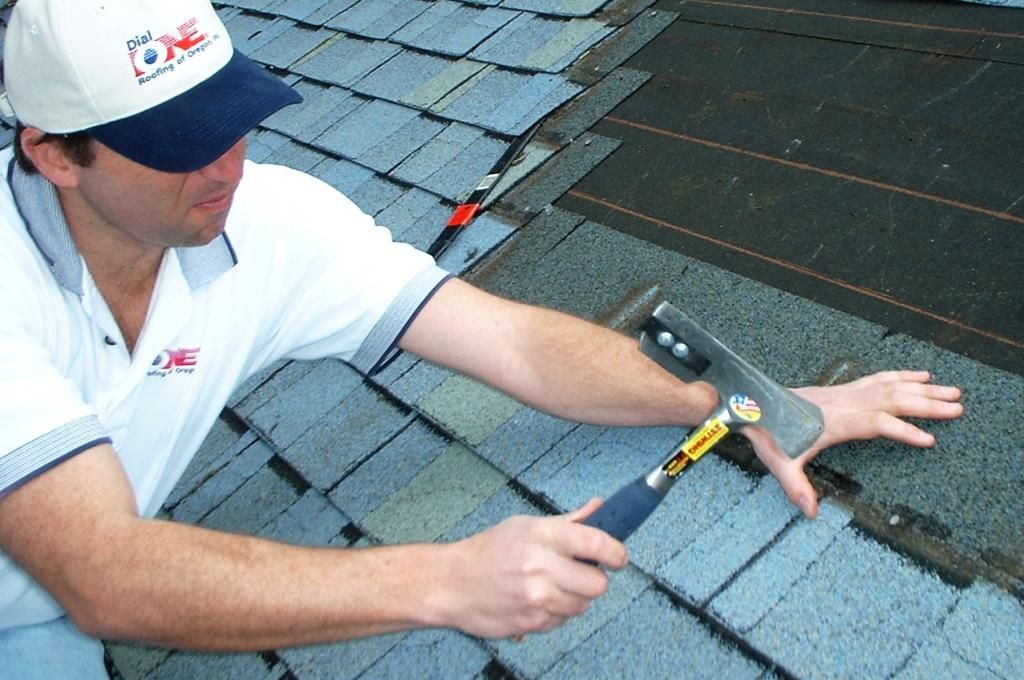Roof Leak Repair Guide: How To DIY & When to Hire a ProThe Architecture Designs

There’s a reason why people say “At least you’ve got a roof over your head!” Without a roof, you’ve not got much of a home. The issue is that when something goes wrong with it, not many people know what to do or how to fix it. A leaky roof is far more common than you might think, and the good news is that chances are you’ll be able to fix it yourself. In a situation where you can’t, we’ll let you know when to hire the pros.
What Causes a Roof to Leak?
Flashing Cracks
source: pinterest.com
The flashing on your roof is the material you can see in between wherever the surfaces of your roof come together. It aims to stop water getting in between roof tiles and, therefore, into your home. As with all exterior materials, flashing erodes over time and can begin to crack. Once it cracks, water creeps in and not only makes the cracks worse but begins to enter your home causing leaks.
Poorly Maintained Guttering
Gutters, especially those near trees, get clogged up over time. If this debris isn’t removed it can cause blockages that, in turn, stop water from freely flowing. This water sits and can eventually find its way into your home through cracks.
Shingle Breakages
Roofing shingle is designed to last a long time at an affordable price point, and even though it is a particularly durable option, it still breaks over time. In the same way as flashing, when water gets through cracks, the cracks worsen and eventually, water gets into your home.
Loose Nails or Sealant
source: pinterest.com
Sealants used on a roof, such as nails or caulking can loosen or come free due to typical wear and tear or extreme weather conditions. If the nail or caulking is removed entirely this leaves a noticeable gap in the roof, a gap that water can enter and cause leaks.
Steps to Fix a Leak Yourself
Identify the Leak Source
Step one is to find where the leak is coming from. This doesn’t have to be entirely accurate but you should have a general idea of the area on the roof. You might identify this in your loft space or from the outside.
Take a Closer Look
source: pinterest.com
It’s time to get onto the roof and take a closer look at where the problem is. Sometimes getting up close and personal with the area can immediately reveal the cause.
Deal With the Damage
Once you’ve identified the issue assess if you think you can take on the repair yourself. Smaller issues such as loose nails are easily fixed. If you’re dealing with a shingle roof, remove the damaged area so that you can remove a good-sized section in full.
Fix Any Cracks or Holes
Using either nails or sealant as appropriate to fill in the cracks, small holes, or other issues. If using a sealant, make life easier by using a caulking gun.
Replace the Old Material With New
The holes and cracks have been repaired, so now you need to replace the old, broken material with the new one. If working with shingles your life will be far simpler than tiled areas. Hopefully, you will have identified this in advance as some tiling will require professional assistance.
Should You Hire a Professional?
source: pinterest.com
As detailed above, in some instances you’re going to feel confident that you can make the repairs yourself. Sometimes, that’s not the case and it will be time to call in a professional roofing contractor:
Professional Inspections
The clue is in the name here, if you’re not a professional roofer, you’re unlikely to be able to conduct a professional annual inspection of the roof. The professionals are able to identify potential problem areas before they actually cause leaks. Their work is proactive rather than reactive.
When Your Skills Run Out
If you’ve given a roof repair the college try but found the leak is still occurring, it’s time to call in the pros. If you’re not the DIY type, then this is likely to be the best option from the start rather than potentially causing a bigger problem.
Piping, Gas, and Chimney Issues
source: pinterest.com
Anything heating, gas, or fire-related isn’t an issue that should be treated as a DIY attempt. There are potentially serious issues that can be caused if the ventilation or pipes are damaged and they should always be dealt with by professionals.
A Whole Reroof
Tackling the whole of your roof is such a big job that it should always be undertaken by professionals. There are a number of specialized skills that you’ll need to have mastered, it’s certainly best to call a roofer in this instance.
Key Takeaways
You’re not alone if you look up at your roof and feel intimidated by it as a DIY job, they are, for the most part, something of an unknown to most people. Plus there’s the danger of getting up high. If there’s a small leak, and you can identify it, then tackling it yourself could be an option. Calling in the professionals is, however, the safer and more straightforward option.
Correctly identifying the origin of the leak is the first, and most important, step in the process.
Whether you choose to do it yourself or get in a professional, don’t leave leaks for too long as they can only get worse.
The post Roof Leak Repair Guide: How To DIY & When to Hire a Pro appeared first on The Architecture Designs.





